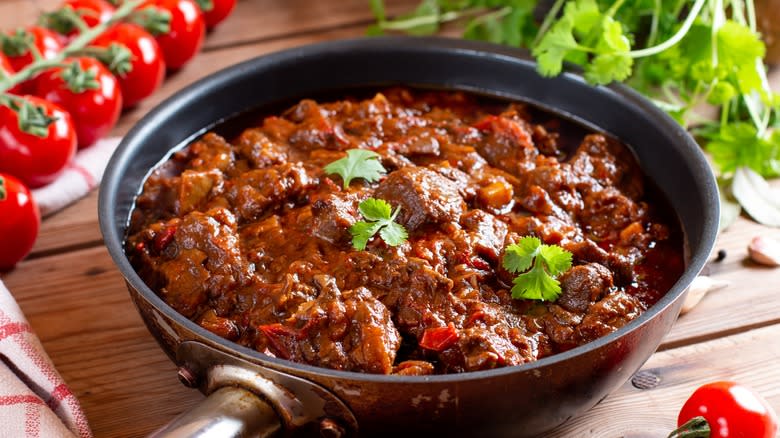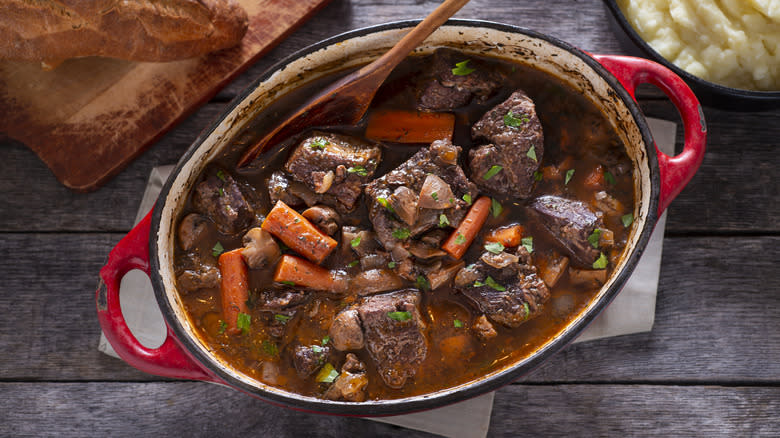The History Of Beef Stew Can Be Traced Back To 14th Century France

An old-fashioned beef stew has a magic that's difficult to describe. Its rustic, warm, and nourishing nature hits the right notes -- perhaps explaining why beef stews are a comfort food worldwide. In addition to the resultant taste, the preparation method comes with a resourceful advantage: It expands typically tough, less-coveted cuts of meat into a pot ready to feed a family.
It's no surprise that humans have been slow-cooking meat in liquid for centuries. Ancient Romans simmered beef in wine, spices, and raisins to craft a dish called copadia. Vikings combined meats, beans, and ground bark in hot water over coals to make a dish called skause. And there's even mention of stewed meat consumption in the Old Testament.
The modern form of beef stew we're familiar with stems from 14th-century France, with recipes first printed by Taillevent, a royal chef and cookbook author. Based on his recipe, beef stew officially materialized in history and hasn't faded since.
Read more: Tips You Need When Cooking With Ground Beef
Beef Stews Are A Foundational Dish In French Cuisine

While there are beef stews in many other cultures, French renditions are particularly engrained into the cuisine's roots. During medieval times, homes typically contained a small ember fireplace with a vessel constantly heating on the flame. Available ingredients -- frequently root vegetables and any possible meats -- would be added to the clay container, crafting a predecessor to crowd-pleasing pot-au-feu. While early versions prepared by peasants infrequently employed beef, it's possible -- but unproven -- that Taillevent was influenced by widespread preparation.
However, Taillevent didn't name the dish stew but rather called it ragout. Ragouts, with their characteristic light texture, were also concocted in French cuisine for centuries. It took longer for the word stew to become associated with a slow-cooked beef dish. Stew got its risqué name in the 18th century, with the expression first alluding to public bathhouses or brothels. Nowadays, a beef stew is as classic of a dish as they come, and it'll likely never fade from such a status.
Read the original article on Tasting Table


